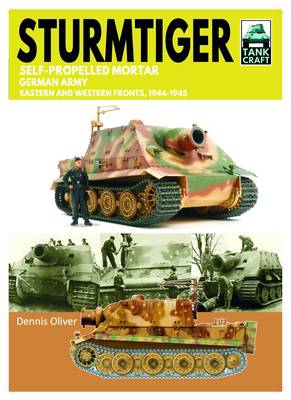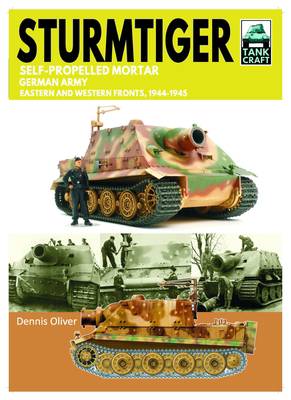
- Afhalen na 1 uur in een winkel met voorraad
- Gratis thuislevering in België vanaf € 30
- Ruim aanbod met 7 miljoen producten
- Afhalen na 1 uur in een winkel met voorraad
- Gratis thuislevering in België vanaf € 30
- Ruim aanbod met 7 miljoen producten
Zoeken
€ 26,95
+ 53 punten
Omschrijving
The house-to-house fighting encountered in Stalingrad convinced the Wehrmacht that a heavily armoured vehicle mounting a weapon capable of destroying enemy strongpoints should be developed as a matter of urgency. The 15cm-armed Brummbär, built on the chassis of the ever-reliable Pzkpfw IV, was rendered obsolete by developments in man-portable anti-tank weapons and so the decision was made to mount an even more powerful gun on the suspension and hull of the Tiger I tank. The original intention was to equip the new design with a 21cm howitzer but as sufficient stocks were unavailable a specially adapted version of the Kriegsmarine's 38cm depth charge rocket launcher was employed. Hitler expected great things from these imposing looking vehicles and ordered that vast stocks of ammunition be produced but in the event less than twenty Sturmmörserwagen 606/4 mit 38cm RW 61, better known as the Sturmtiger, were built. Drawing on official documentation and unit histories Dennis Oliver investigates the formations that operated these deservedly famous vehicles and uses archive photos and extensively researched colour illustrations to examine the markings, camouflage and technical aspects of the Sturmtigers that fought in the last battles of the war. A key section of his book displays available model kits and aftermarket products, complemented by a gallery of beautifully constructed and painted models in various scales. Technical details as well as modifications introduced during production and in the field are also examined, providing everything the modeller needs to recreate an accurate representation of these historic vehicles.
Specificaties
Betrokkenen
- Auteur(s):
- Uitgeverij:
Inhoud
- Aantal bladzijden:
- 64
- Taal:
- Engels
- Reeks:
Eigenschappen
- Productcode (EAN):
- 9781036140663
- Verschijningsdatum:
- 28/04/2026
- Uitvoering:
- Paperback
- Formaat:
- Trade paperback (VS)
- Afmetingen:
- 210 mm x 298 mm

Alleen bij Standaard Boekhandel
+ 53 punten op je klantenkaart van Standaard Boekhandel
Beoordelingen
We publiceren alleen reviews die voldoen aan de voorwaarden voor reviews. Bekijk onze voorwaarden voor reviews.








